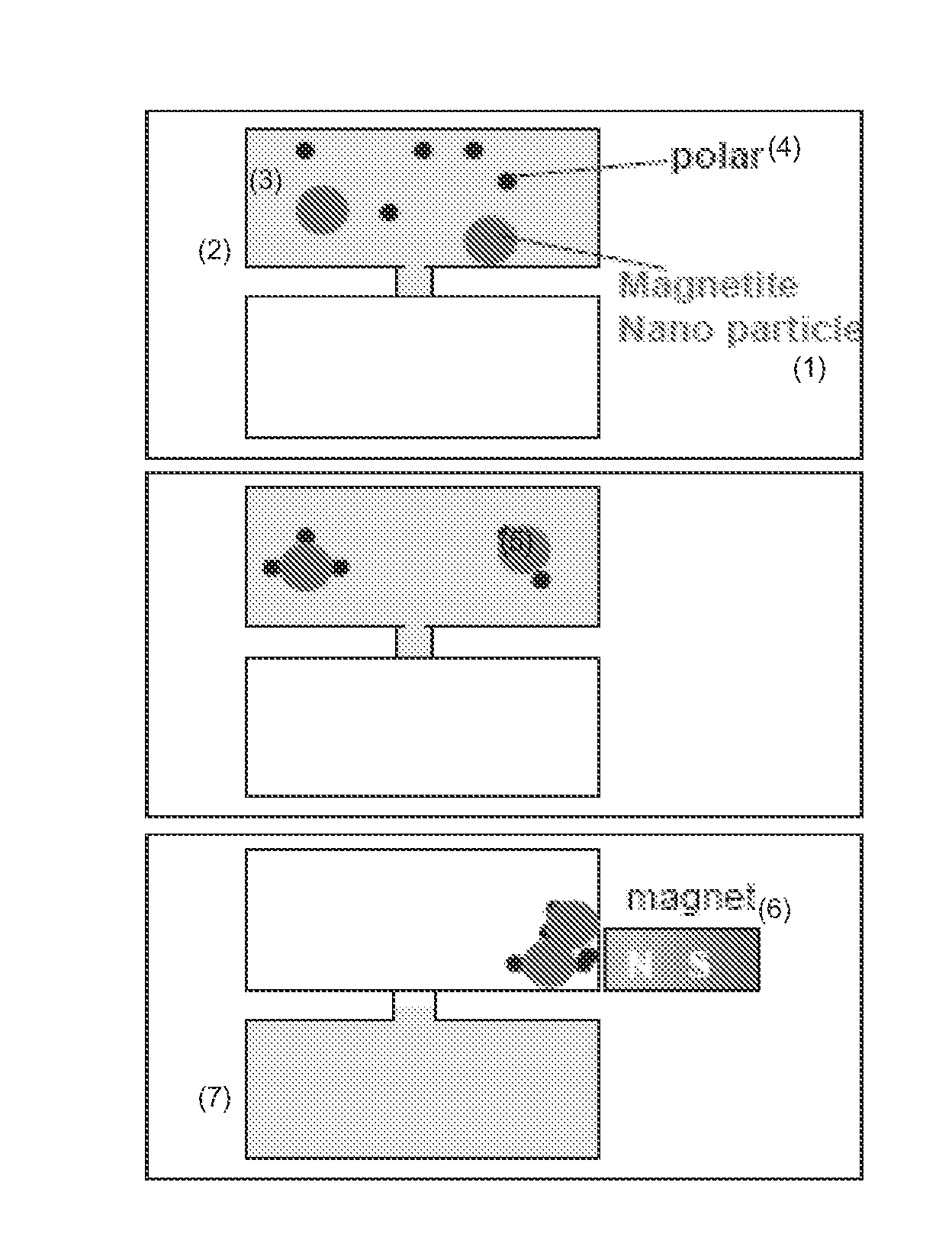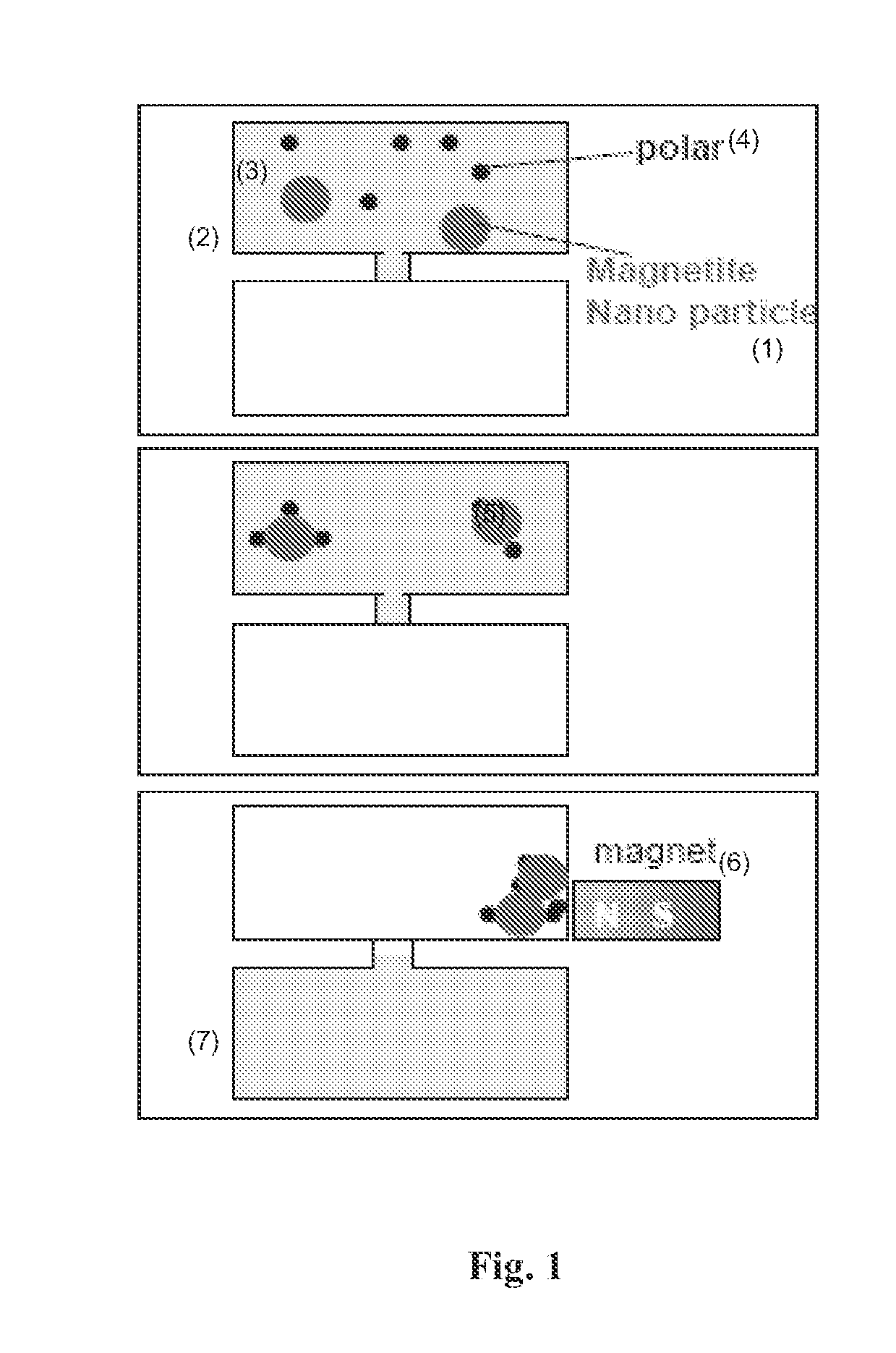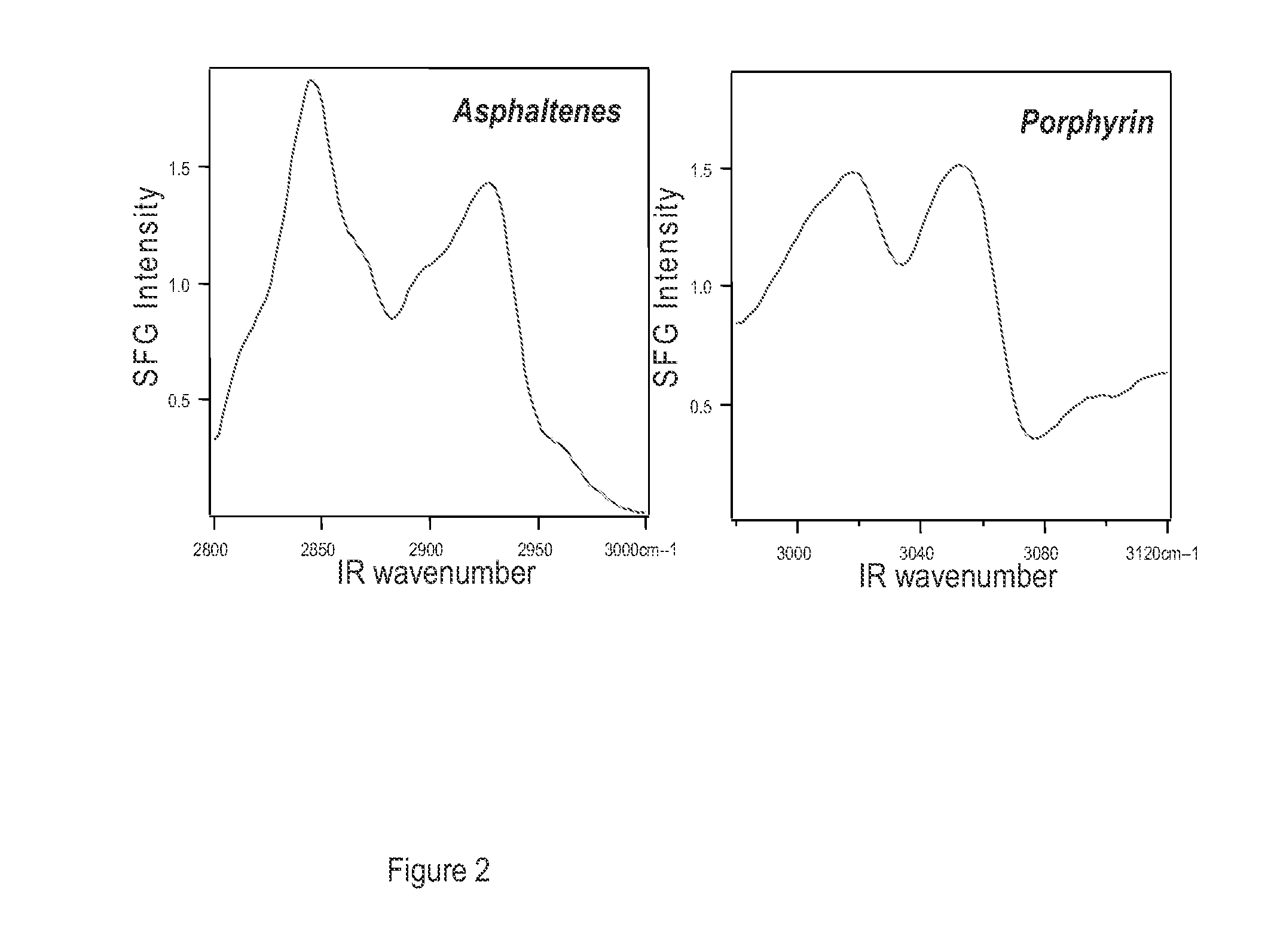Method and systems to remove polar molecules from refinery streams
- Summary
- Abstract
- Description
- Claims
- Application Information
AI Technical Summary
Benefits of technology
Problems solved by technology
Method used
Image
Examples
example 1
Polar Molecule Contaminants have Affinity for High Energy Surfaces
[0065]Sum frequency generation (SFG) was used to examine the affinity of asphaltene or porphyrine for sapphire, a high energy surface. Sample of deuterated toluene that contain either asphaltene or porphyrine, two polar molecule contaminants, were contacted with sapphire. The SFG spectra of the interface between the sapphire and the toluene-asphaltene or toluene-porphyrine was generated. Deuterated toluene does not produce any spectral features in the 2800-3200 cm−1 and the spectral structures shown in FIG. 2 are produced by asphaltene or porphyrine at the liquid / sapphire interface, indicating the adsorption of these two polar molecules onto the sapphire. This is concluded based on the fact that randomly oriented molecules at the interface do not produce any SFG signals. When molecules such as asphaltene and porphyrine adsorb onto the solid their random orientational arrangement is lifted and able to produce SFG signa...
example 2
Removal of Asphaltene from Toluene
[0066]A toluene solution containing 250 ppm of asphaltene (extracted from Arab light crude) was cleaned using 10 wt % of 40-60 nm magnetite particles. FIG. 3 shows a toluene solution containing 250 ppm asphaltene to which no magnetite nanoparticles have been added (1), and a toluene solution containing 250 ppm asphaltene to which the nanoparticles have been added (2). The magnetite nanoparticles with adsorbed asphaltene in (2) have been attracted to a magnet (3) which exerted an attractive magnetic force on the magnetite nanoparticles. FIG. 3 shows a reduction in asphaltene concentration only. The initial amounts of solvent in (1) and (2) were not identical, and the lower level of solution in (2) is not due to liquid uptake by the nanoparticles.
example 3
Removal of Asphaltene from Toluene
[0067]770 ppm of asphaltene (extracted from Arab light crude) was prepared in toluene (FIG. 4, solution 0). 10 wt % of 40-60 nm magnetite nanoparticles were then added to the solution and kept in contact with the solution for approximately five minutes. The nanoparticles were removed using a magnet (FIG. 4, solution 1). 10 wt % of 40-60 nm magnetite nanoparticles were added to solution 1. After approximately five minutes the nanoparticles were removed using a magnet (FIG. 4, solution 2). 10 wt % of 40-60 nm magnetite nanoparticles were then added to solution 2. After approximately five minutes the nanoparticles were removed using a magnet (FIG. 4, solution 3). The UV-Vis transmission spectrum of each solution was collected and the absorption was calculated. Using the known value of the concentration of “solution 0” and the measured value of the total UV-Vis absorbance of each solution, the asphaltene concentration of each solution was determined. FI...
PUM
 Login to View More
Login to View More Abstract
Description
Claims
Application Information
 Login to View More
Login to View More - R&D
- Intellectual Property
- Life Sciences
- Materials
- Tech Scout
- Unparalleled Data Quality
- Higher Quality Content
- 60% Fewer Hallucinations
Browse by: Latest US Patents, China's latest patents, Technical Efficacy Thesaurus, Application Domain, Technology Topic, Popular Technical Reports.
© 2025 PatSnap. All rights reserved.Legal|Privacy policy|Modern Slavery Act Transparency Statement|Sitemap|About US| Contact US: help@patsnap.com



